Located in southeastern France, Provence is a region rich in history, natural beauty, and timeless charm. Famous for its lavender fields, vineyards, and historic villages, Provence is a place where every turn reveals a postcard-worthy scene. From Roman ruins to lively local markets, each village tells a unique story. After exploring Provence numerous times, I’ve put together a list of the prettiest villages, perfect for anyone looking to discover the heart of this incredible region.
In This Blog
The Pretties Villages of Provence
Gordes

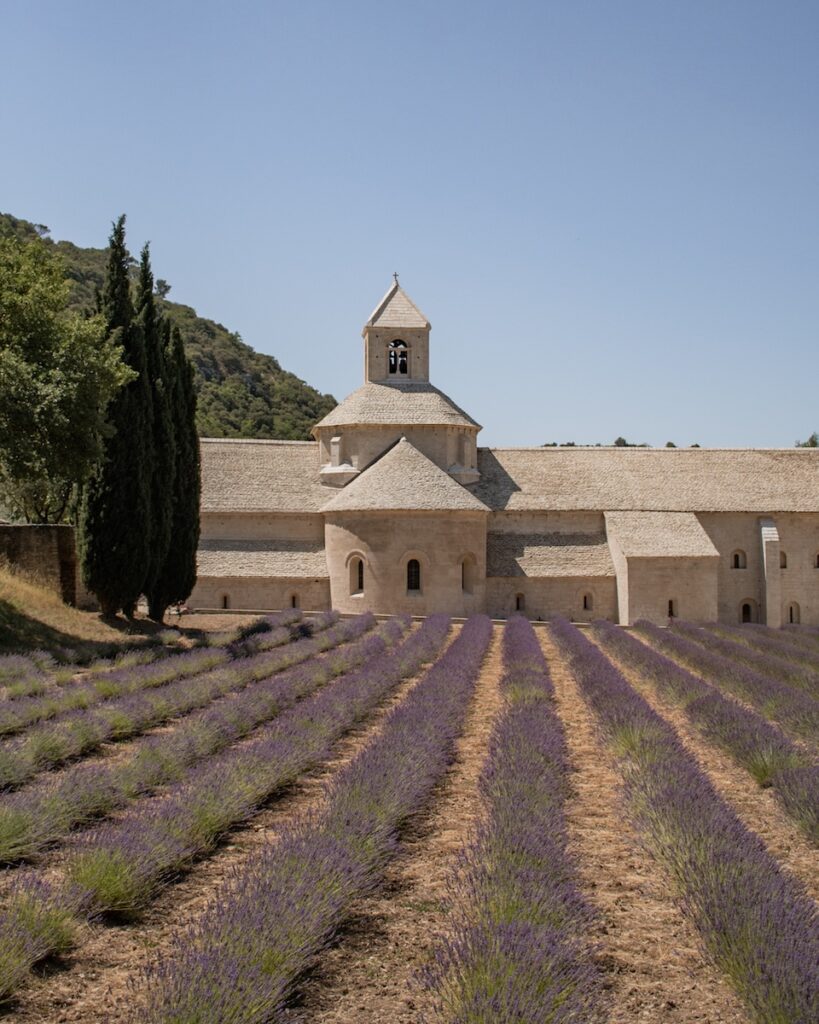

Located on a hilltop with stunning views of the Luberon Valley, Gordes is one of Provence’s most iconic villages. The village is characterized by its stone-built houses, narrow cobblestone streets, and the ancient Château de Gordes that crowns the hill. Whether you’re admiring the village from the famous viewpoint on 13 Rte de Cavaillon (first photo), or wandering through its quiet streets, Gordes feels timeless.
Tuesday mornings are market days in Gordes, where local vendors sell fresh produce, lavender products, artisanal goods, and handmade crafts. If you’re a fan of lavender, don’t miss the chance to visit Abbaye Notre-Dame de Sénanque (second photo), just a short drive from the village. Here, the iconic lavender fields surrounding the 12th-century abbey create an unforgettable sight in the summer.
Saignon



Saignon might not be as famous as some of the larger villages, but it’s one of Provence’s best-kept secrets. This tiny village offers a more intimate and less touristy experience. Its charming square (Place de la Fontaine), with a picturesque fountain at its center, looks like it’s straight out of a fairytale (second photo). Wandering through its narrow streets, you’ll feel as though time has stood still, with every corner revealing yet another beautiful view or charming stone house.
Saignon is especially delightful during lavender season (mid-June to mid-August), when the fields surrounding the village are in full bloom (third photo was taken from Chemin des Lantins, which you will find in the map). If you’re looking for a peaceful retreat that still feels authentic, this is the village to add to your list.
Lourmarin
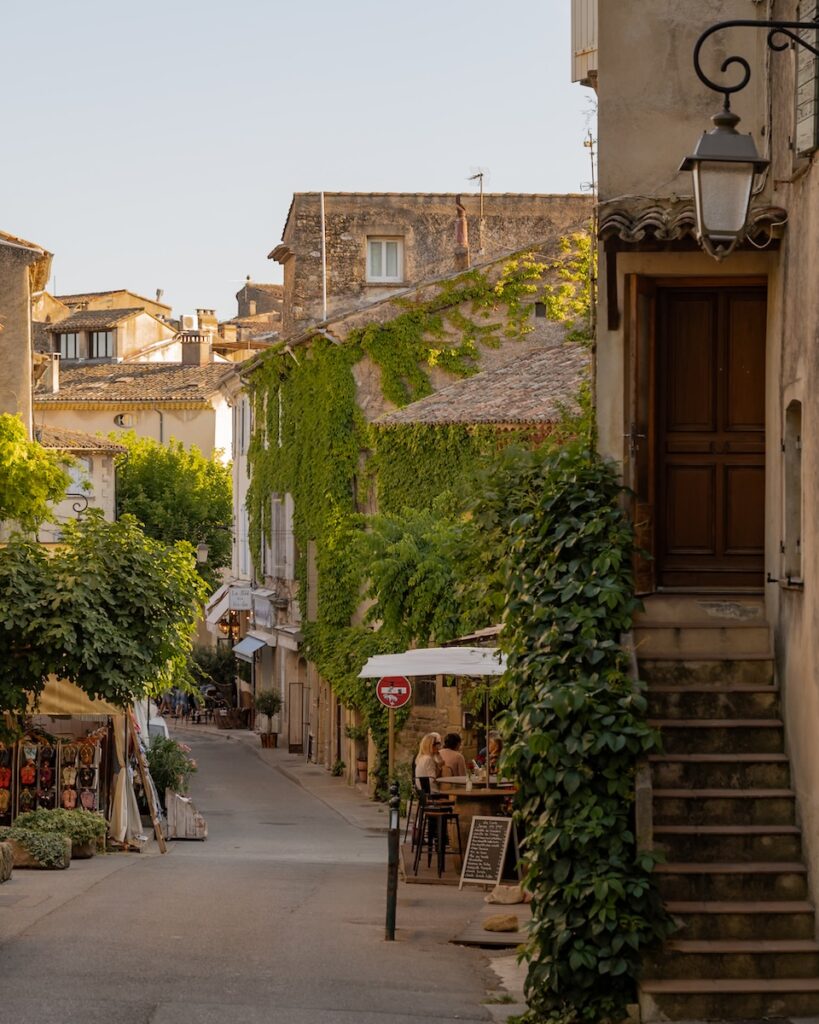
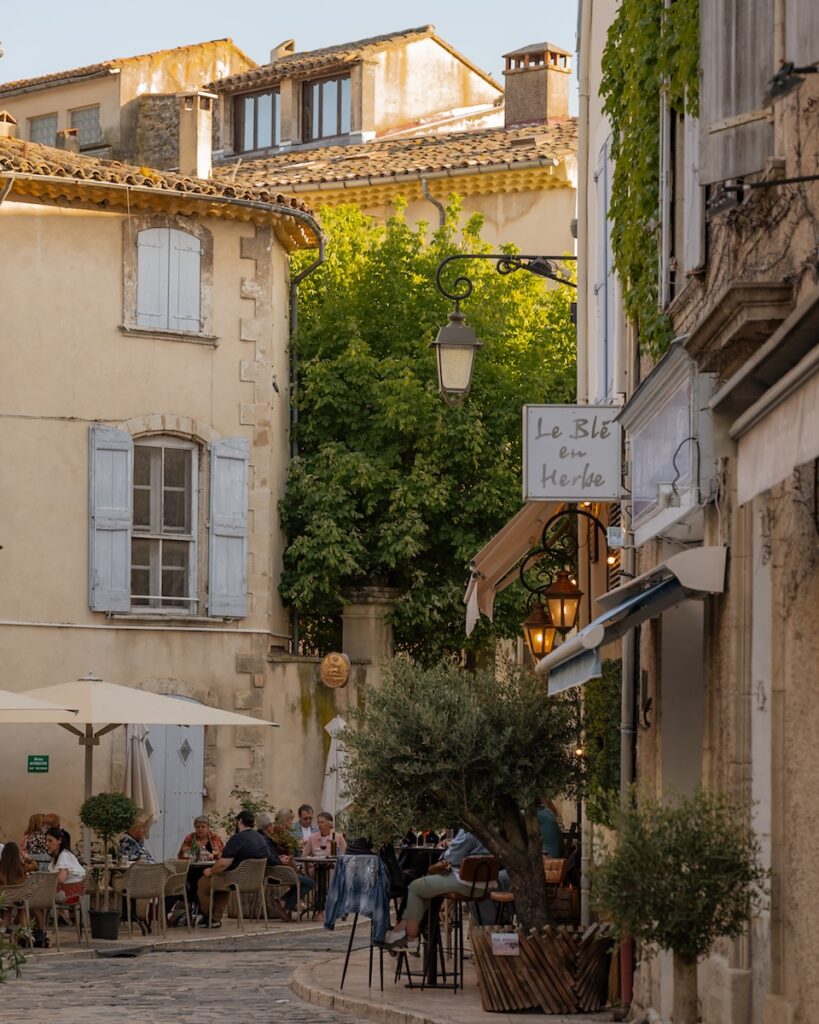
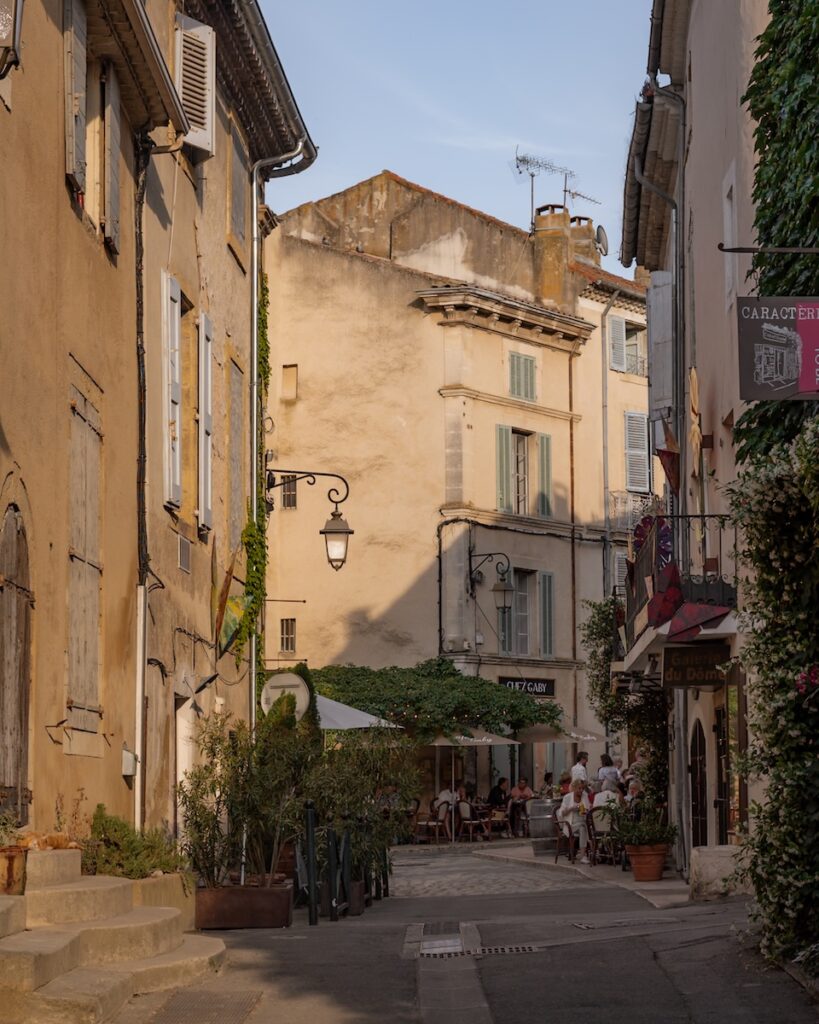
Lourmarin is one of Provence’s more bigger towns. Tucked away in the Luberon, it’s known for its picturesque streets lined with boutique shops, art galleries, and cafes, making it perfect for a leisurely day of shopping or sipping coffee in the sunshine. Be sure to explore the Château de Lourmarin, a Renaissance castle that provides a glimpse into the region’s history.
Lourmarin also has a market on Friday mornings, one of the best in Provence. Here, you can find everything from local produce and cheeses to handmade goods. It’s the perfect place to pick up a few souvenirs or ingredients for a picnic in the nearby vineyards.
Restaurant tips:
- Bouchon: Known for its small, shareable dishes made from fresh, seasonal ingredients. Perfect for a casual meal with friends or family.
- Le Tonneau: A relaxed wine bar offering focaccia, tartines, and tapas. Sit outside at the barrel tables and enjoy the laid-back atmosphere.
- Café Gaby: Located in the village square, this is the best spot for people-watching while sipping on a coffee or wine and enjoying French cuisine.
Tip: Stay in Mas la Chêneraie Lourmarin. Located among meadows, this peaceful retreat is only a 15-minute walk from the village. The property offers a peaceful stay with beautiful views and comfortable rooms, making it an ideal base for exploring Lourmarin and the surrounding area.
Lacoste
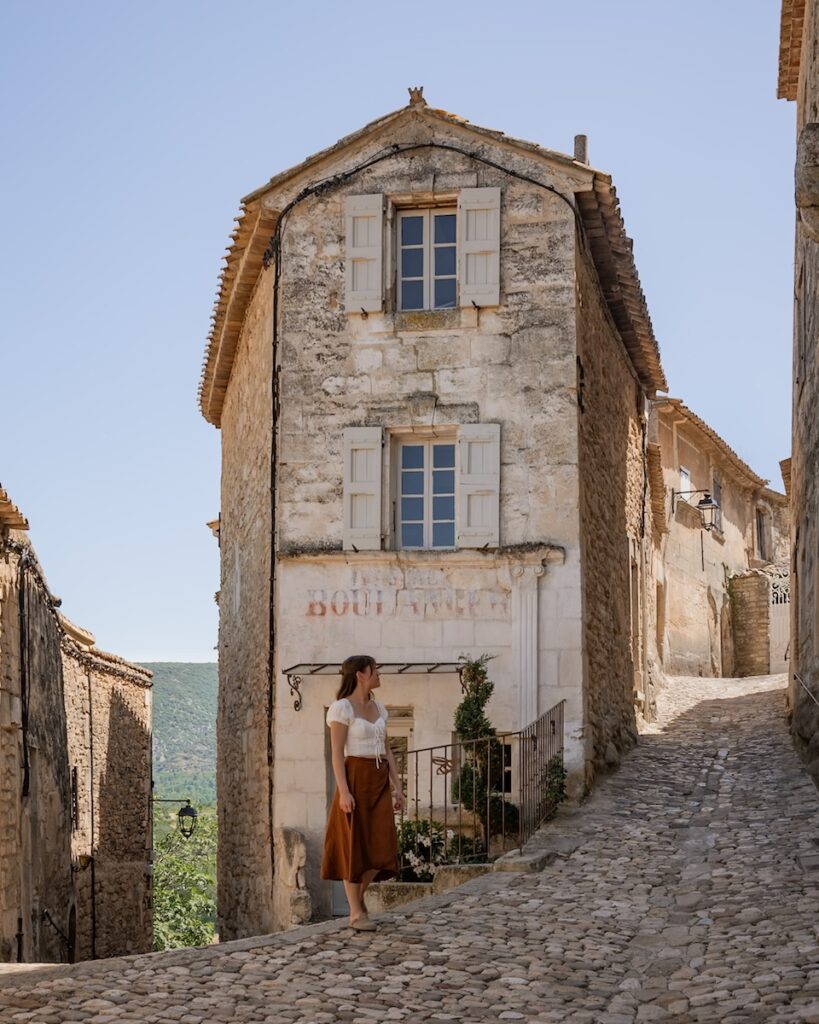
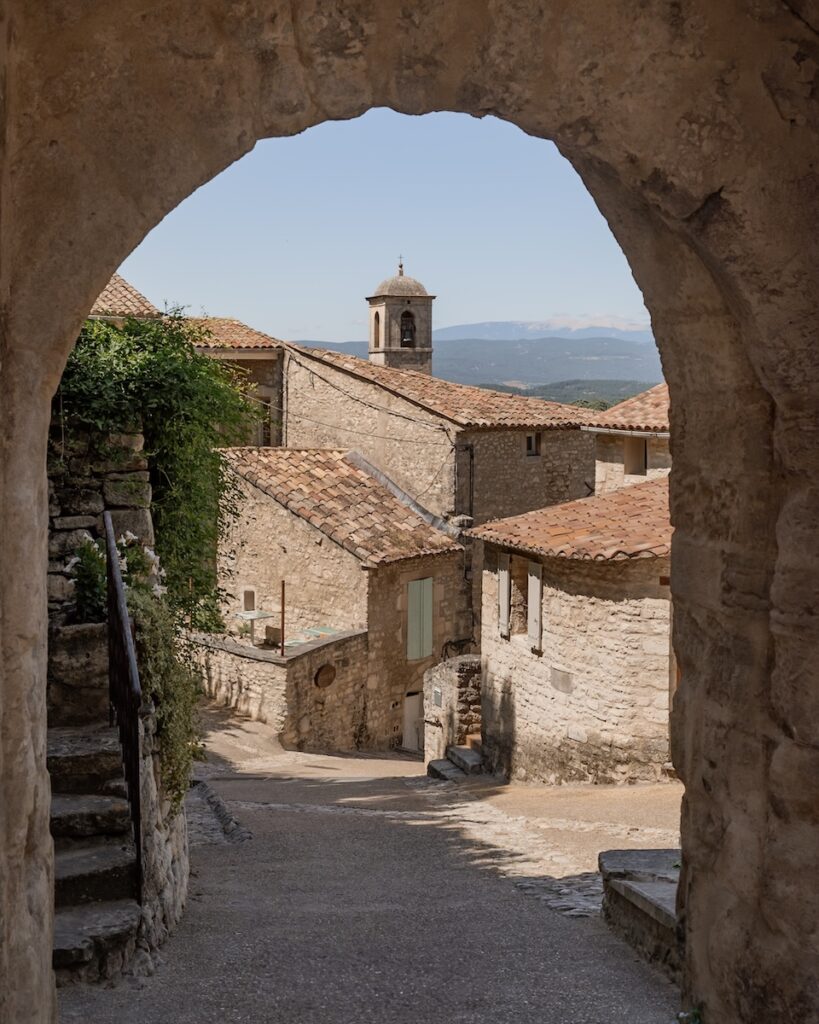
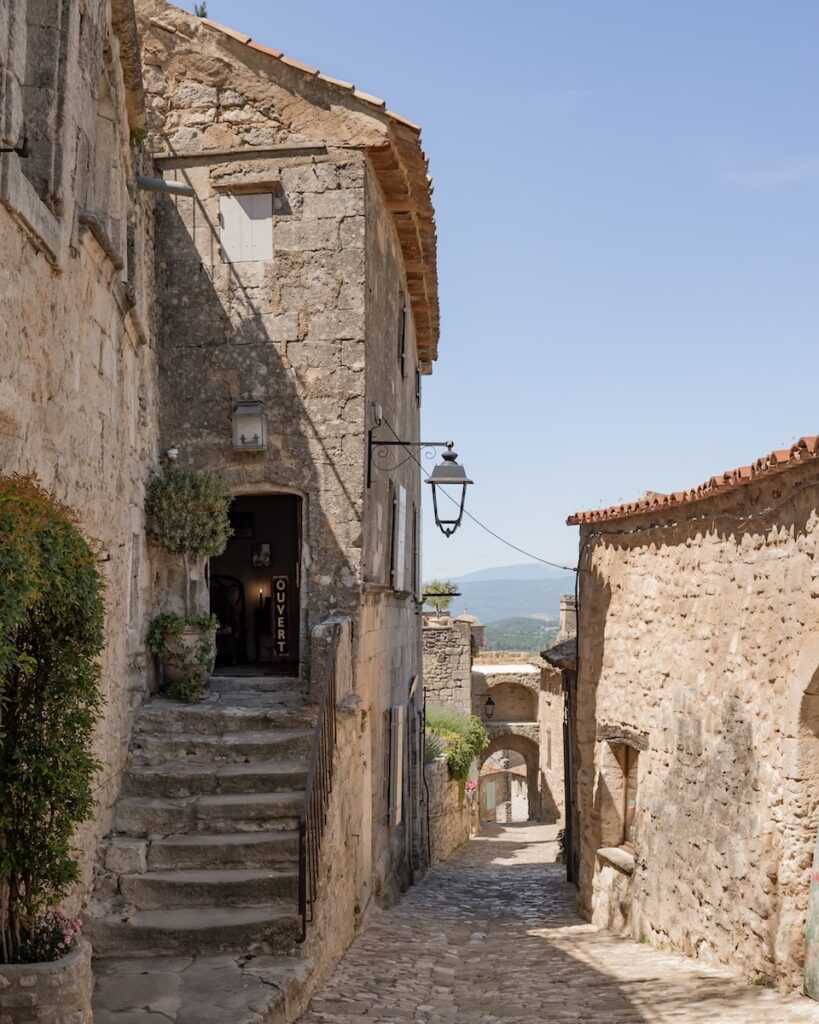
Lacoste is a hilltop village known for its castle, Château de Lacoste, which used to belong to the Marquis de Sade. It’s a quiet, medieval village with winding streets and stone houses, perfect for a leisurely stroll. From the top, you’ll get some fantastic views over the Luberon Valley.
The castle ruins are an interesting stop, and if you visit during the summer, the castle sometimes hosts art exhibitions and events. It’s less touristy than other villages, so if you’re after a slower pace, Lacoste is a good choice.
Moustiers-Sainte-Marie



Moustiers-Sainte-Marie is a beautiful village at the base of the Alps, near the Gorges du Verdon. It’s known for its pottery, so make sure to visit a few of the ceramic shops dotted around the village. The village itself has a stunning backdrop of cliffs, with a small waterfall flowing through the center.
If you’re up for a bit of a climb, head up to the Notre-Dame de Beauvoir, a chapel located high above the village. The views from the top are well worth the effort.
Tip: After exploring Moustiers, head to Pont du Galetas for breathtaking views of the turquoise waters and the Gorges du Verdon. On sunny days, unwind at Plage de Chabassole, or if you’re up for adventure, rent a canoe or pedalo from Verdon Canoe (near the bridge) or Evasion Verdon (on the lake’s western side) to fully immerse yourself in the stunning scenery.
Roussillon
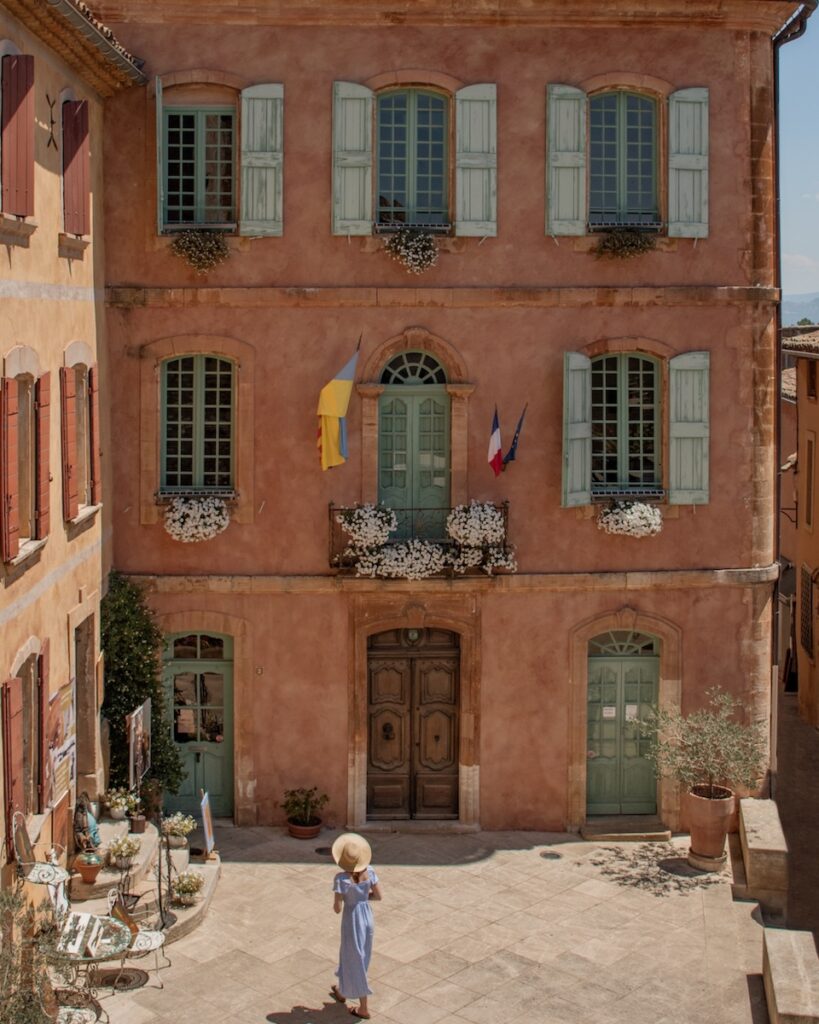
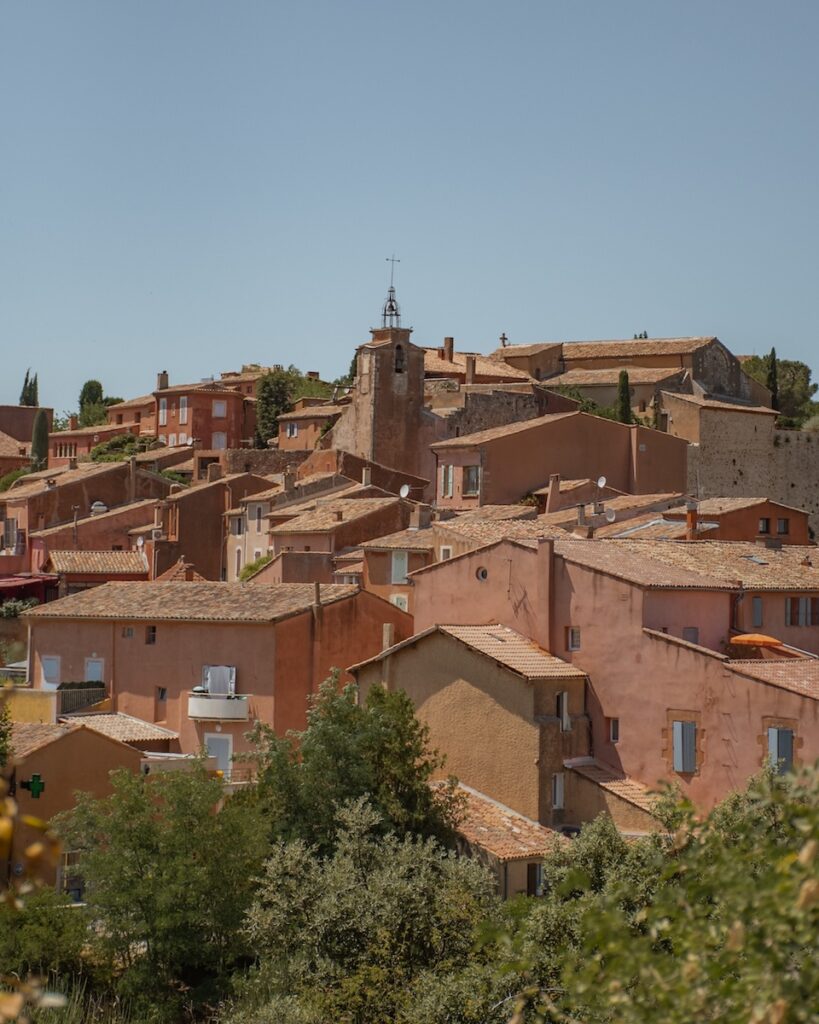
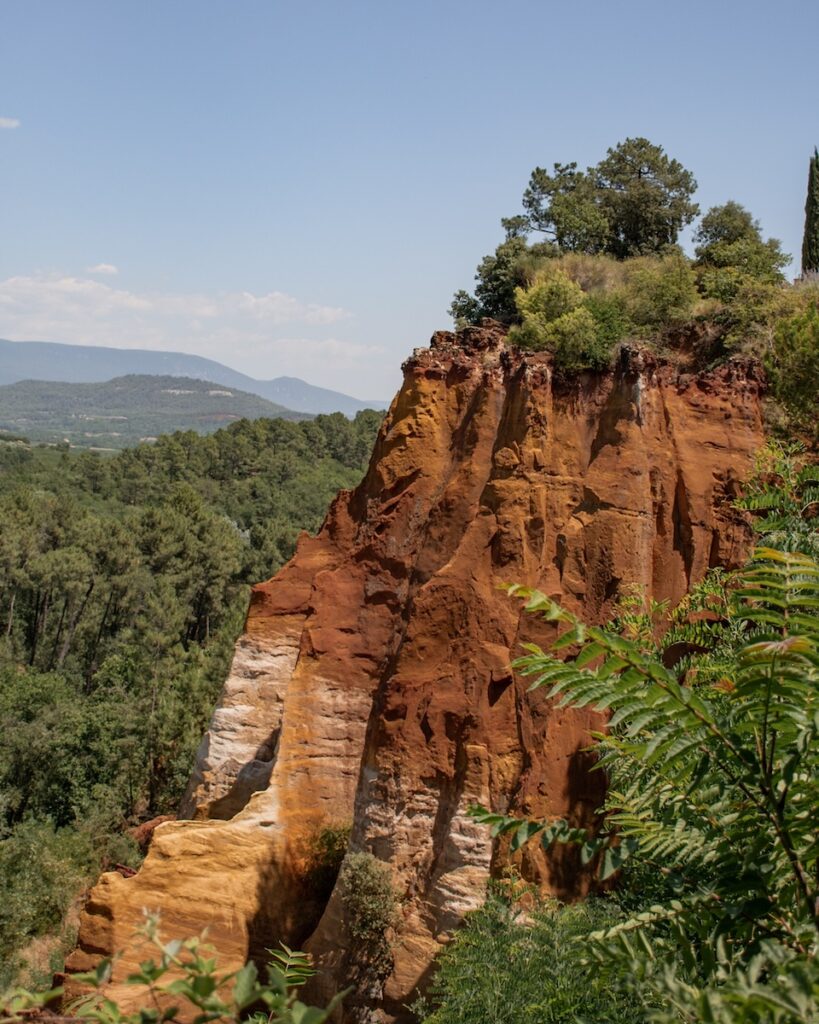
Roussillon stands out thanks to its bright red and orange cliffs, as the village sits in the middle of a large ochre deposit. Walking through its colourful streets, with buildings painted in shades of red, yellow, and orange, is an experience in itself. It’s one of the most visually striking villages in Provence.
Though the quarries are no longer active, you can still explore them by taking the Sentier des Ocres, an easy walking trail offering both 30- and 60-minute routes (third photo). Along the way, you’ll get up close to the ochre-rich landscape and learn about its fascinating history.
Fontaine-de-Vaucluse


Fontaine-de-Vaucluse is known for the Source de la Sorgue (source of the River Sorgue), a crystal-clear spring which feeds the river. A stroll along the river is a must, with plenty of peaceful spots to relax and cool your feet in the refreshingly cold water. As you walk, you’ll come across charming cafés, restaurants, and shops. Perfect for enjoying an ice cream or a leisurely lunch by the riverside.
Another interesting stop is the Moulin à Papier, a paper mill from the 15th century, where you can see how paper was traditionally made. It’s a unique piece of local history.
L’Isle-sur-la-Sorgue


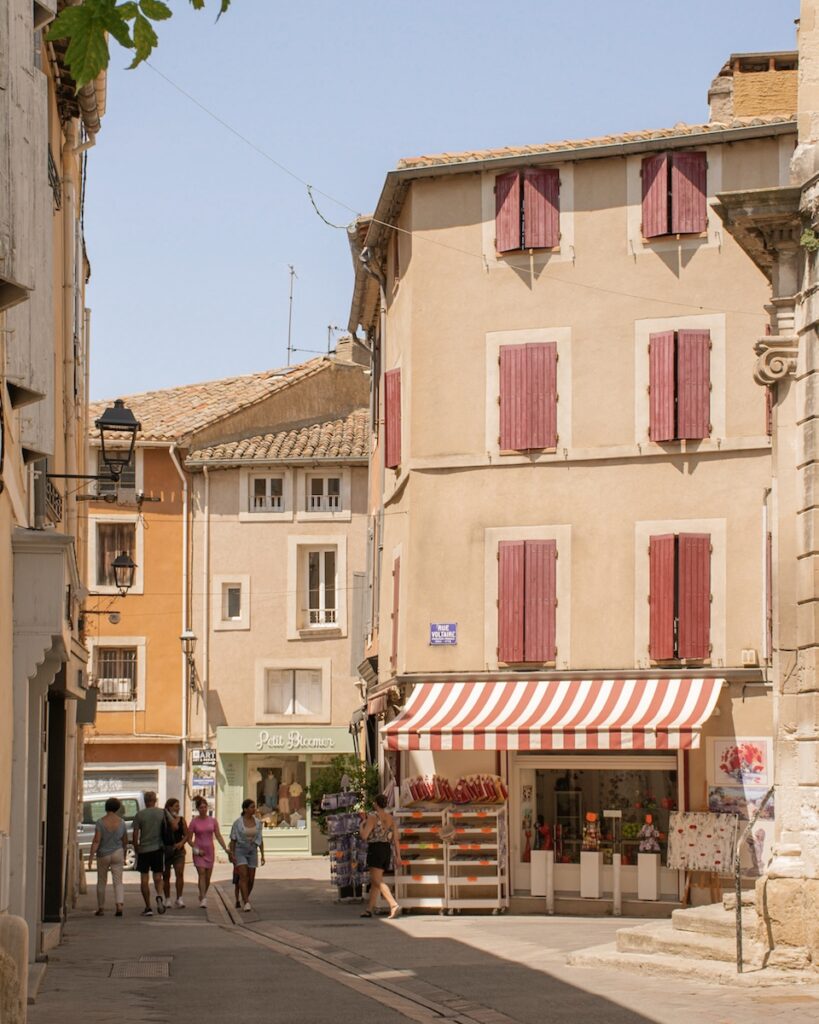
L’Isle-sur-la-Sorgue is often called the “Venice of Provence” because of its canals and waterwheels. The village is famous for its antique markets, with the biggest one held on Sundays. If you’re into antiques or vintage finds, it’s a must-visit.
Beyond the markets, the village has some great cafés and restaurants along the river, making it a lovely spot to spend the day. You can also explore the canals and take in the atmosphere of this charming village.
Saint-Rémy-de-Provence



Saint-Rémy-de-Provence is known for its connection to Vincent Van Gogh, who lived here and created some of his most famous works. You can follow the Van Gogh walking tour to see the places that inspired his paintings. Saint-Rémy also has a great Wednesday market, where you can pick up everything from fresh produce to local crafts.
Just outside the village, you’ll find the Glanum ruins, an ancient Roman city, as well as the Saint-Paul de Mausole asylum, where Van Gogh stayed. It’s a village full of history and art, with a relaxed vibe that makes it easy to explore.
Tip: Stay in Laurier flat in Mas Bruno, a picturesque and perfect base for your Provence trip (second and third photo).
Les Baux-de-Provence



Les Baux-de-Provence is located on a rocky plateau with stunning views over the Alpilles mountains. The village is famous for its medieval Château des Baux, which offers a glimpse into the region’s past. Exploring the castle ruins and wandering through the narrow streets of the village feels like stepping back in time.
Les Baux is also home to Carrières de Lumières, an immersive art show set in a former limestone quarry. It’s a unique experience that adds something different to your visit. Les Baux can get busy, especially in summer, so it’s best to visit early in the day.
Restaurant tip: Les Baux Jus. For an unforgettable lunch, this spot offers fresh, healthy dishes made with seasonal fruits, vegetables, and aromatic herbs.
Arles

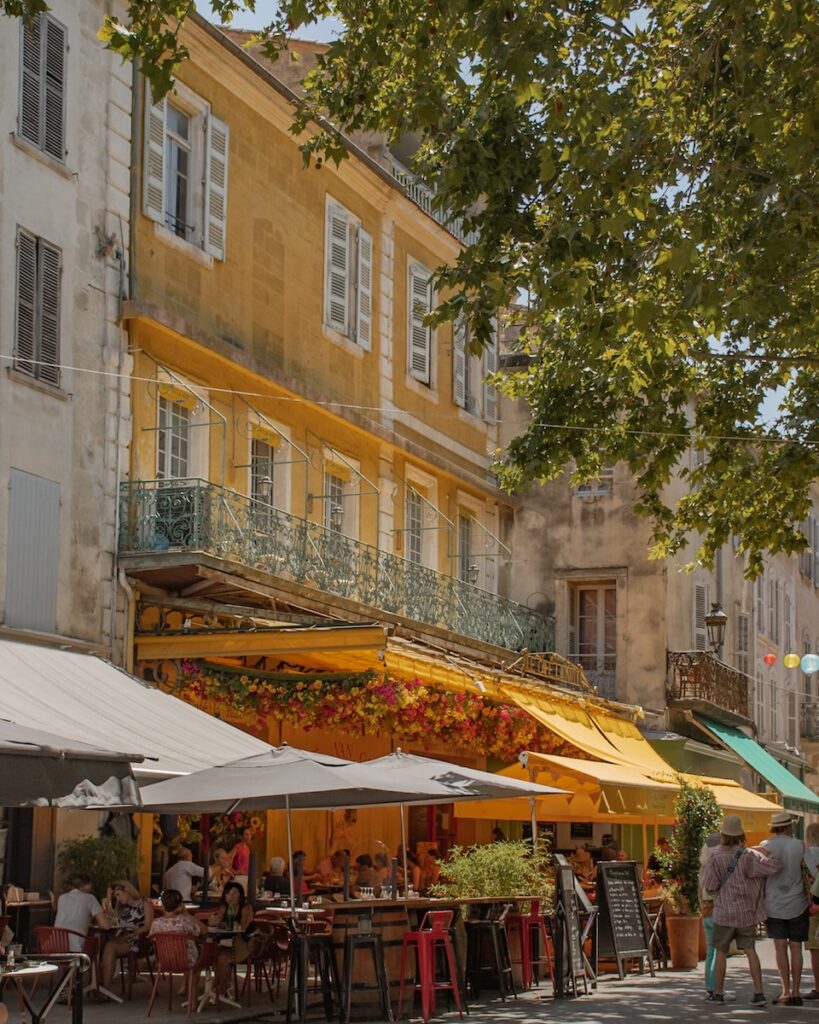

Arles is packed with history, from its Roman amphitheater, the Arènes d’Arles built in 90 AD, to the streets that inspired Van Gogh. Walking through the city, you’ll see ancient ruins, lively squares like the Place du Forum, and plenty of galleries and shops.
The city also has a strong artistic vibe, with many exhibitions and events happening throughout the year. Arles is a great mix of history, culture, and energy, making it an exciting stop in Provence.
Ménerbes
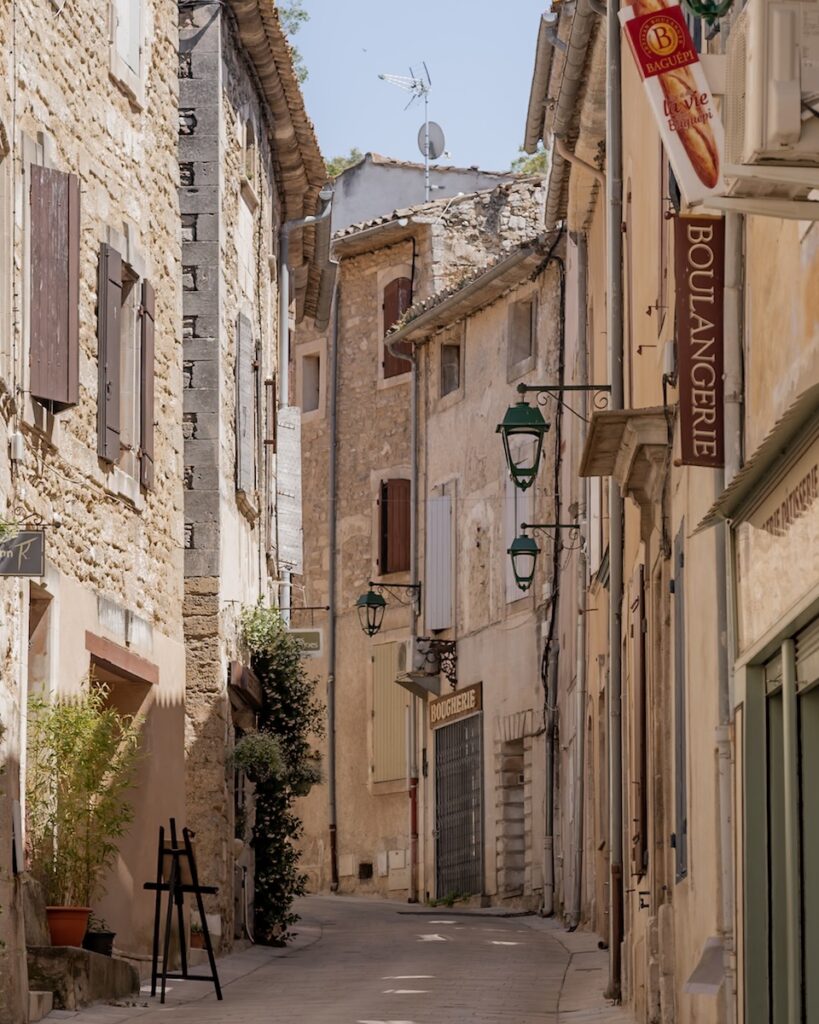

Ménerbes is a quiet, hilltop village that offers great views over the Luberon Valley. It’s known for its connection to Peter Mayle, who wrote A Year in Provence here. The village has a laid-back feel, and it’s a good place to relax and take in the surroundings. Ménerbes is perfect if you’re looking for a peaceful escape without too many tourists.
Simiane-la-Rotonde
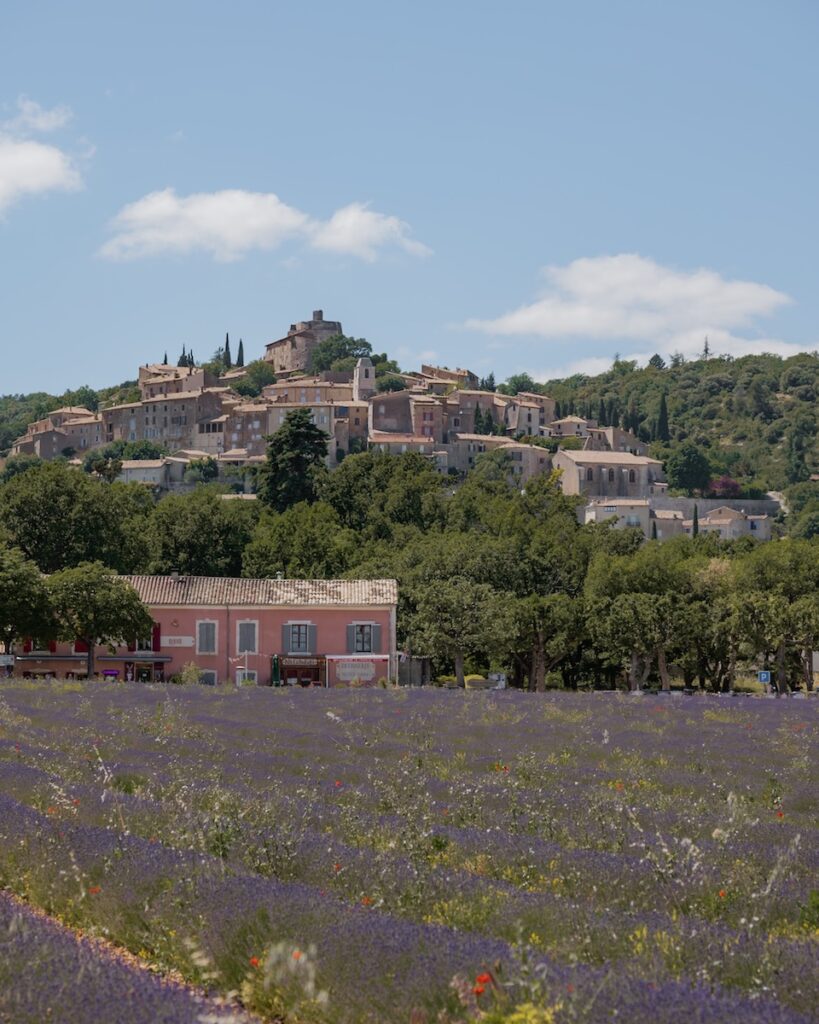

High in the hills with views of the surrounding lavender fields, Simiane-la-Rotonde feels like an undiscovered treasure of Provence. The heart of the village is the Romanesque Rotonde, a 12th-century structure that now hosts exhibitions and events. As you wander around the village, you’ll find charming stone houses and quiet corners perfect for photos. In the summer months, the rolling lavender fields around the village create a beautiful, fragrant backdrop. Simiane-la-Rotonde is the place to experience the slow, peaceful side of Provence, perfect for those looking to escape the crowds.
Goult



Just like Simiane-la-Rotonde, Goult is a serene village with a relaxed charm. Wander around the village and discover its beautiful streets and lovely squares. A highlight here is the Moulin de Jérusalem, an old windmill used for grinding grain (second photo).
Ansouis


Known for its beautifully restored Château d’Ansouis, which dates back to the 12th century, Ansouis is a postcard-perfect Provencal village. Ansouis is also a food lover’s delight, with excellent restaurants serving fresh Provençal dishes. Whether you’re here to dive into history, want to enjoy a quiet meal in a picturesque setting, or take in the views of the surrounding vineyards and hills, Ansouis is a village that captures the essence of Provence.
Aix-en-Provence

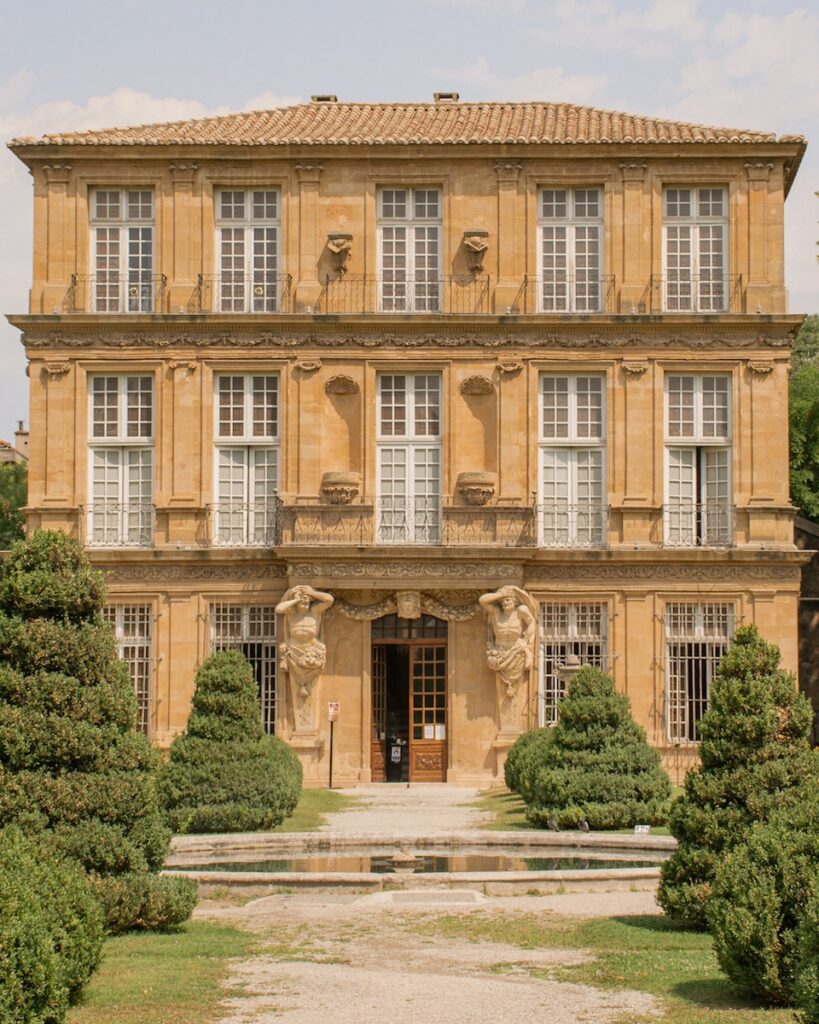
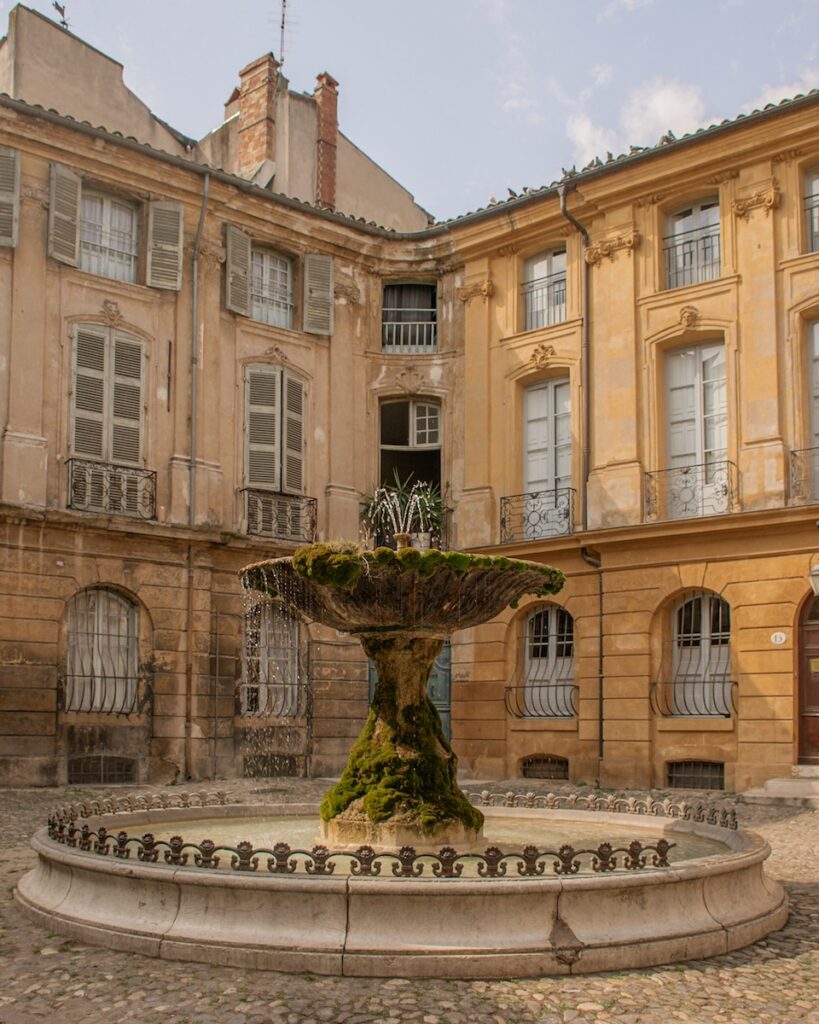
Though it’s a larger town, Aix-en-Provence is a must-see when exploring the region. The city is known for its vibrant markets, impressive fountains, and rich artistic heritage. Take a stroll along the Cours Mirabeau, where café terraces and boutique shops make for excellent people-watching.
Known as “the city of a thousand fountains,” Aix-en-Provence invites you to explore its many beautiful water features. See how many you can find! Don’t miss the Pavillon de Vendôme and Jardins du Pavillon Vendôme (second photo).
The markets in Aix-en-Provence are a highlight. Visit on Tuesday, Thursday, or Saturday mornings for fresh produce and handmade goods. Smaller markets throughout the city offer a chance to find unique treasures at any time of day. With its mix of history, culture, and a lively atmosphere, Aix-en-Provence is an essential stop on your trip.
Restaurant tips:
- Angelina: This restaurant offers a delightful combination of a warm atmosphere and delicious French cuisine, making it a great spot for enjoying traditional dishes in a cozy setting.
- La Cita: For a change of pace, head to La Cita for classic Spanish tapas and refreshing sangria. This charming restaurant, tucked away in a narrow alley, provides a vibrant dining experience with a Spanish twist.
- Prima Pasta: Craving Italian cuisine? Prima Pasta is the place to go. Located in a lively square, it serves up delicious, freshly-made pizzas that are perfect for a casual meal.
Cassis
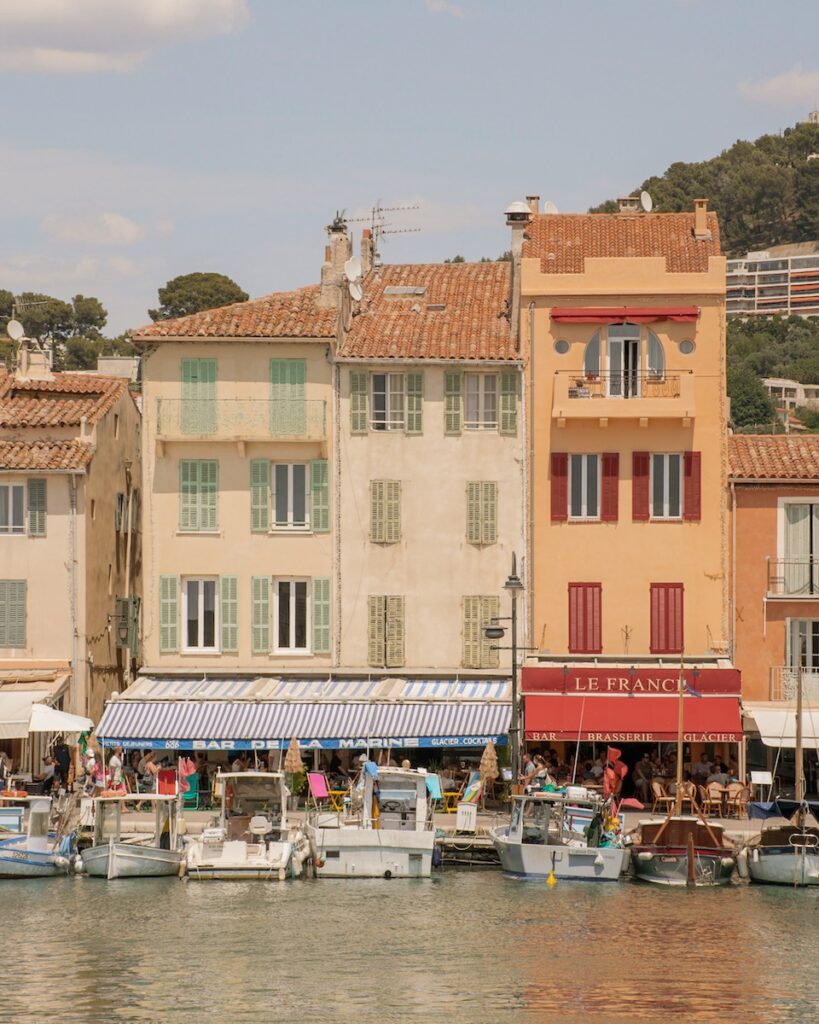
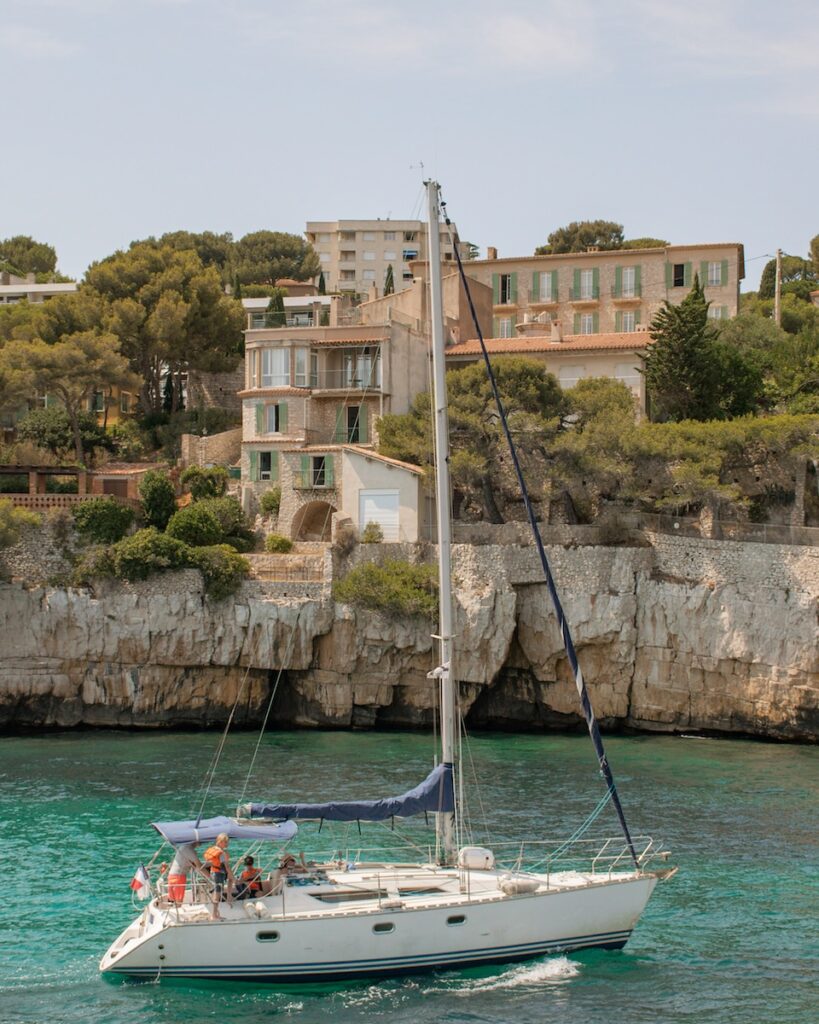

A picturesque coastal village, Cassis is best known for its stunning Calanques, the dramatic cliffs that plunge into the crystal-clear Mediterranean. Whether you take a boat tour or hike along the trails, the views are unforgettable. Back in the village, the harbour is lined with brightly coloured facades, and seafood restaurants offer the freshest catch of the day. Be sure to try a glass of the local Cassis AOC wine. If you love a mix of the sea and Provençal charm, Cassis is the place to be.
Provence Map
Make sure to save this map to explore the prettiest villages of Provence more easily!
How to Visit Provence
The main airport in Provence is Marseille Provence Airport (MRS). You can also opt for Nice Côte d’Azur Airport (NCE).
Find flights to Provence
Alternatively, you can take the Eurostar from Belgium, the Netherlands, or England to Paris. From there, transfer to high-speed TGV trains, which will whisk you directly to Provence. The TGV connects Paris and other major French cities, so you can easily travel to Marseille, Avignon, or Aix-en-Provence.
Getting Around Provence
The best way to explore Provence is by car. Renting a car allows you to drive through the scenic countryside, stopping at charming villages along the way.
If you prefer public transport, Aix-en-Provence and Nice are well-connected by train and bus, making them convenient bases.
When to Visit Provence
Provence is blessed with a Mediterranean climate, offering sunny, pleasant weather most of the year. However, the best times to visit are in spring (April to June) and autumn (September to October). During these seasons, the weather is mild, and the crowds are smaller, allowing you to enjoy the villages and landscapes without the summer rush.
If you’re looking to see the famous lavender fields, plan your trip between mid-June and mid-August. Spring is also ideal for vineyard tours and experiencing Provence’s markets at their best.
Where to Stay in Provence
I’ve visited Provence several times and stayed in different places each time. If you’re planning to explore Provence for more than a week, I suggest having two bases: one inland and one along the coast. For inland stays, I recommend:
- Aix-en-Provence: Perfect for both its vibrant local scene and its strategic location. You can easily explore the town’s attractions and also travel to nearby villages and coastal areas. Just be aware that most villages are a drive of at least 30 minutes away.
- Saint-Rémy-de-Provence: Another excellent choice, known for its picturesque streets and proximity to historical sites.
- Lourmarin: Situated conveniently among some of the most beautiful villages in Provence, Lourmarin offers a great mix of good restaurants and a charming, relaxed atmosphere without being overly crowded.
For a coastal experience, consider Old Town Nice or Villefranche-sur-Mer. Both offer a blend of markets, historic architecture, and stunning views of the Mediterranean, making them ideal bases for exploring the coast.
If you’re relying on public transport, Aix-en-Provence is a great central hub. Its efficient transport links will help you discover both the inland treasures and coastal delights of Provence with ease.
I edited all images with the Vibes Preset – or check it out on it on Etsy.























